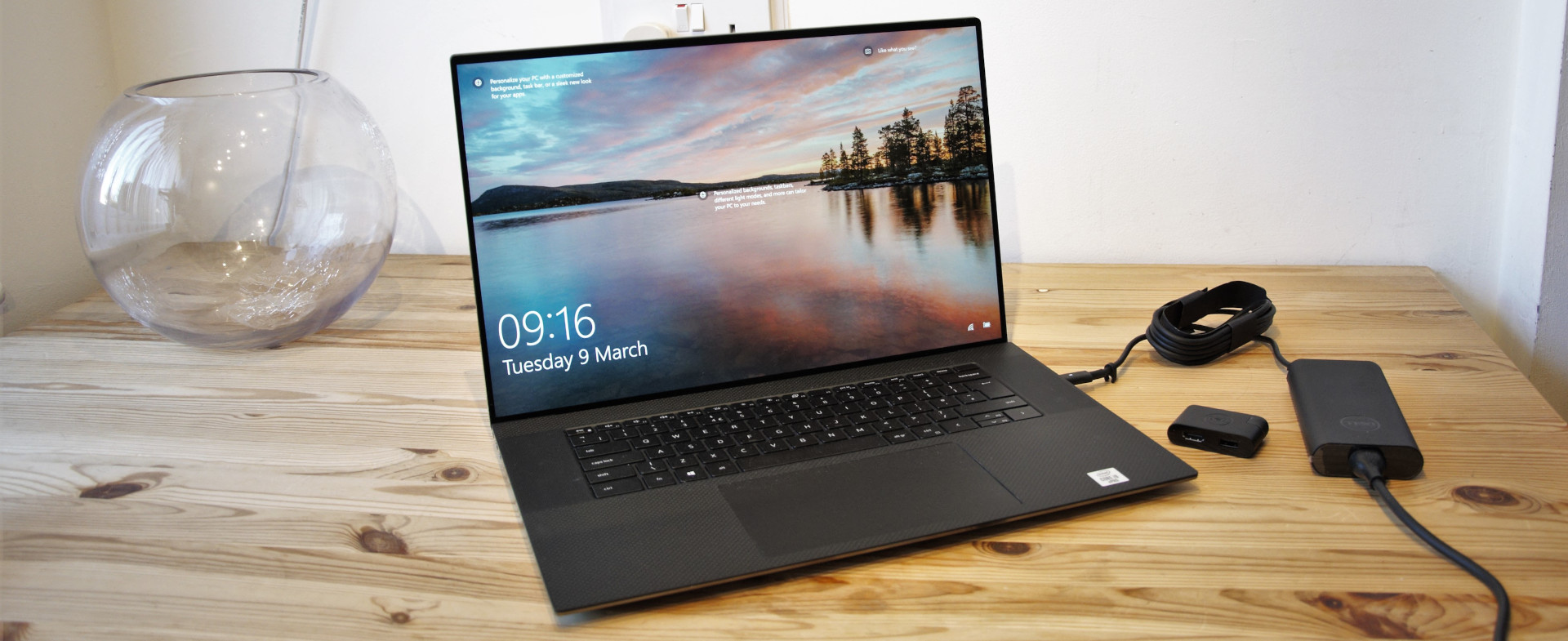TechRadar Verdict
Plenty of power, an elegant case and a gorgeous screen makes for an exceptional user experience and desirable power curve. But this level of refinement from Dell isn’t cheap, and it needs extra accessories to add ports others have by default.
Pros
- +
Elegant design
- +
Stunning display
- +
Decent processing performance
Cons
- -
Expensive
- -
Difficult to upgrade
- -
Only USB-C ports
- -
Poor battery life
Why you can trust TechRadar
With phones now capable of so much, those with laptops are expecting more from PC systems.
Unless a laptop can do something substantially better than a phone or tablet, then its most significant contribution is the cardiovascular workout lugging it around provides.
The shifting balance of power between mobile and desktop solutions has encouraged laptop makers to try and provide an alternative to office-bound workstations. The new Dell Precision 5750 is a prime example of this new portable power generation that delivers a desktop-like experience to those that need performance on the move.
It’s hardly cheap and treads on a market Apple has successfully exploited, but the Precision 5750 might be the most subversive Dell laptop to come from the manufacturer in a while.
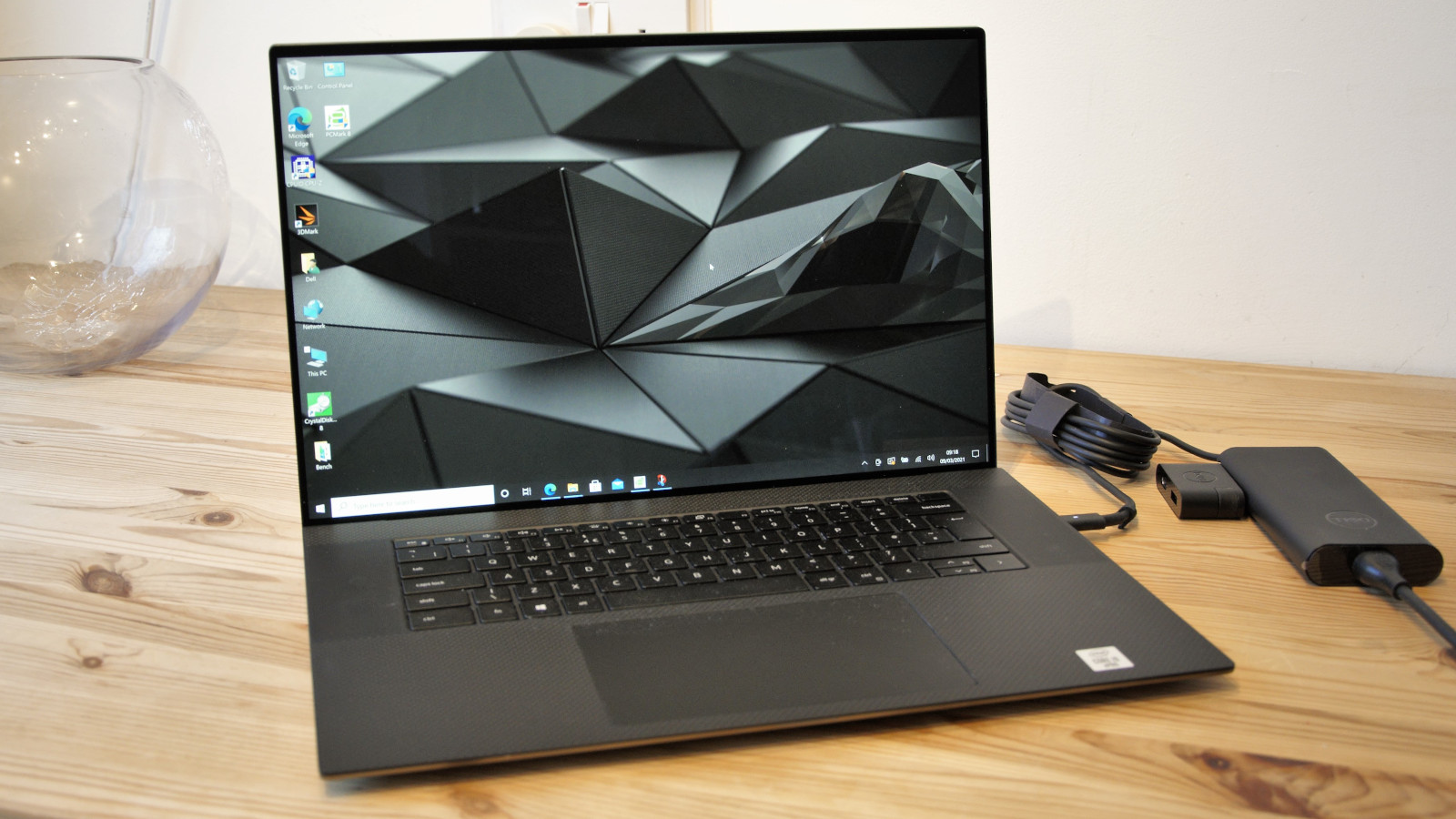
Price and availability
As with most Dell systems, for business customers, the actual specification of the system can be tailored to exacting needs. The Dell Precision 5750 can start at £2,029 exclusive of VAT ($2,089), and for that outlay, you get a 1080p screen, Core i5 processor, a modest amount of RAM and storage.
The review hardware Dell sent us for review was less cautiously specced, and by choosing the best CPU, most RAM, a massive amount of storage and the best 4K screen, we boosted that cost to £4,458.21, exclusive of VAT and $5,507.58 in the USA.
And, as we’ll cover in the review, this machine necessitates some accessories that aren’t included in that price.
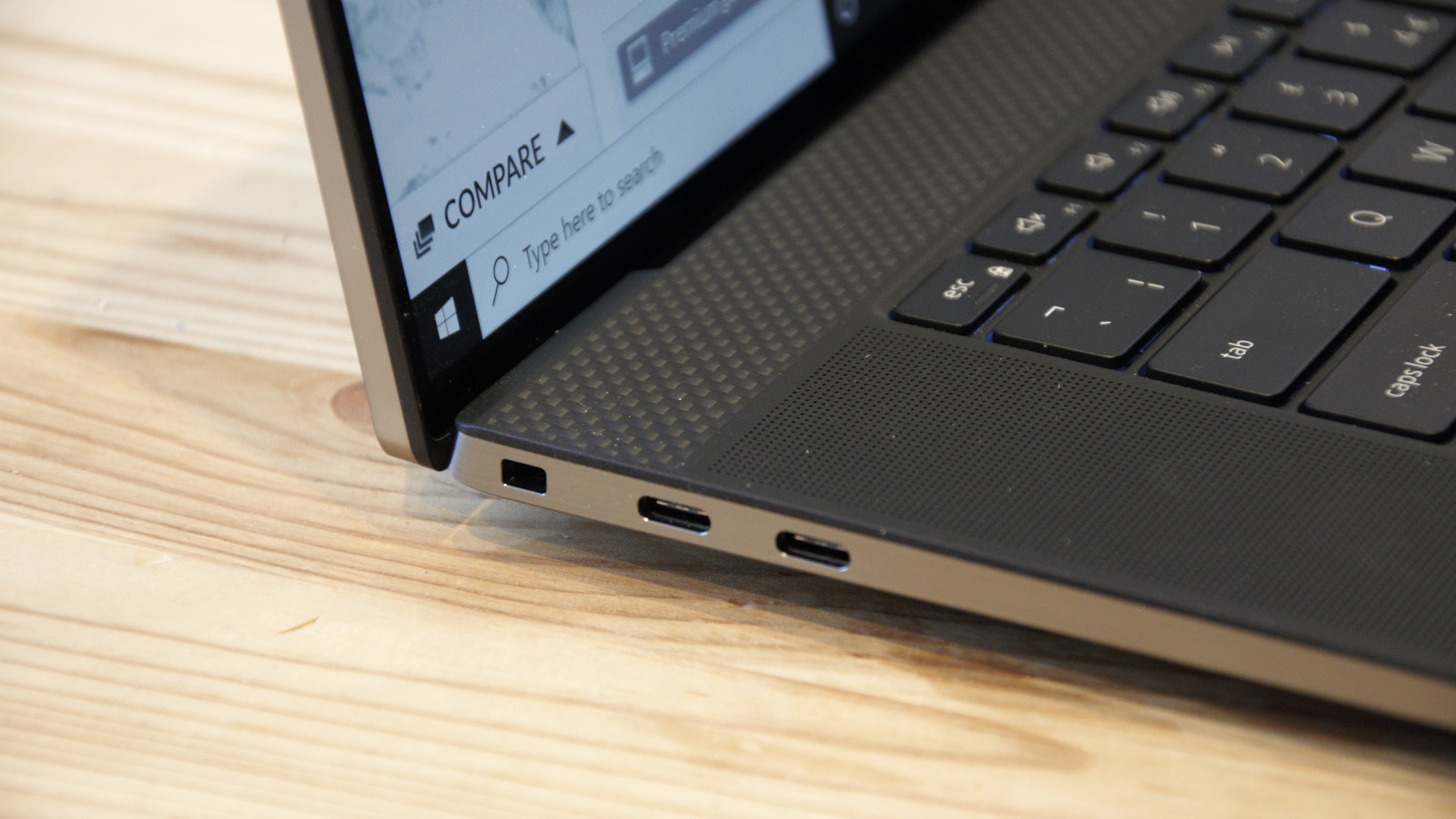
Design
In the Dell marketing material for the Precision 5750, much is made of how light and thin it is, and indeed this is a svelte design. The review hardware sported a 17-inch 4K display with minimal borders and one of the biggest touchpads we’ve ever seen on a laptop.
Outside is a brushed aluminium skin, where the inside is has a black carbon fibre effect finish that looks more durable than it probably is.
While it might be thin, at more than 2Kg without the necessary accessories, this isn’t the lightest mobile system we’ve encountered, being only marginally lighter than the latest Dell XPS 17.
Until recently, only Apple had the arrogance, or bravado, to deliver a laptop exclusively with a new port and then charge its customers for an adapter to give them the ports they need most.
While USB-C isn’t entirely new, most Dell business customers won’t be using it that much yet, which makes the designers choice to make this machine exclusively USB-C a bit revolutionary.
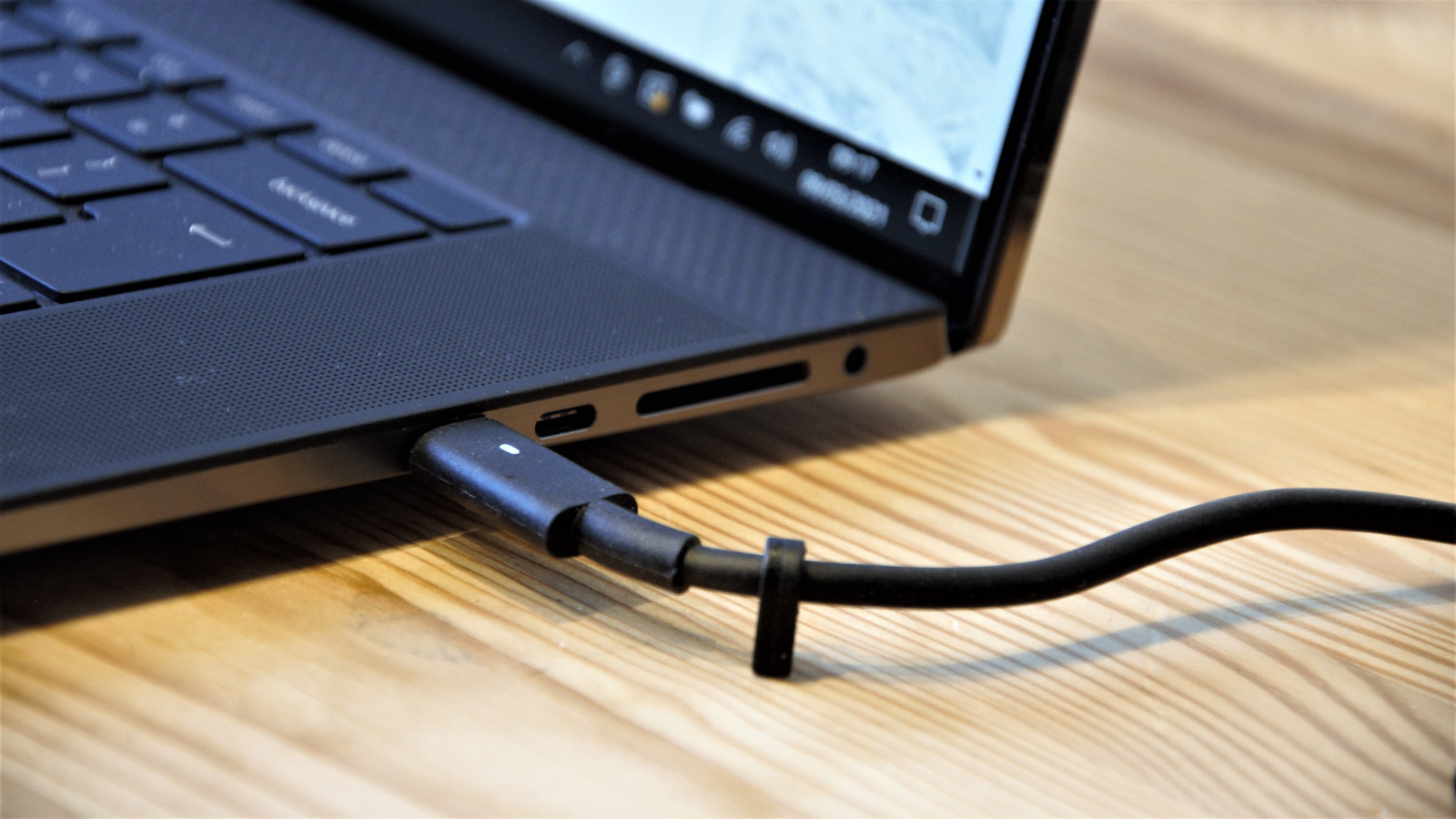
Here is the Dell Precision 5750 configuration sent to TechRadar for review:
CPU: Intel Core i9-10885H CPU
Graphics: NVIDIA Quadro RTX 3000 with Max-Q Design
RAM: 64GB DDR4
Screen: 17-inch, WLED UHD+ resolution 3840 x 2400, 60 Hz, Touch display
Storage: 2x 1TB KIOXIA NVMe SSD
Ports: 4x USB 3.2 Gen 2 Type-C port with Thunderbolt 3,1x Universal Audio Jack, 1x SD card slot, 1x Wedge security slot.
Connectivity: Intel Wi-Fi 6 AX201, 2 X 2, 802.11ax with Bluetooth 5.1
Camera: Infra-Red Windows Hello compliant
Battery: 97 WHR, 6-cell, Lithium-ion polymer
Weight: 4.70 lb (2.13kg)
Size: 374.48 x 248.08 x 13.5 mm (W x D x H)
Sharper commercial minds at Dell prevailed, but not until the machine specifications were finalised, so a small USB-C dongle was included that provides a single USB-A port and HDMI out.
The hint, if you missed it, is that this machine needs a Thunderbolt docking station, and Dell is happy to sell you one of those.
We'd recommend a Thunderbolt docking station because the four provided ports are Thunderbolt 3 specification that can downgrade to USB 3.2 Gen 2. As one port is always required for charging and/or connection to the docking station, there is plenty of bandwidth available through the remaining for additional displays, external storage and other bandwidth-demanding peripherals.
Beyond the four USB-C ports are a single 3.5mm audio jack and a standard SD card reader, and no other ports. No LAN, USB-A, DisplayPort or security card slots.
Without a docking station, this machine will require plenty of Thunderbolt or USB-C adapters to add back all the ports that most people need.
For those curious about potential upgrades over the working life of their machine, the news isn’t good. There are no access panels for memory or storage, and those wanting to explore those options will be required to deploy the TORX screwdrivers and remove the entire underside of the machine.
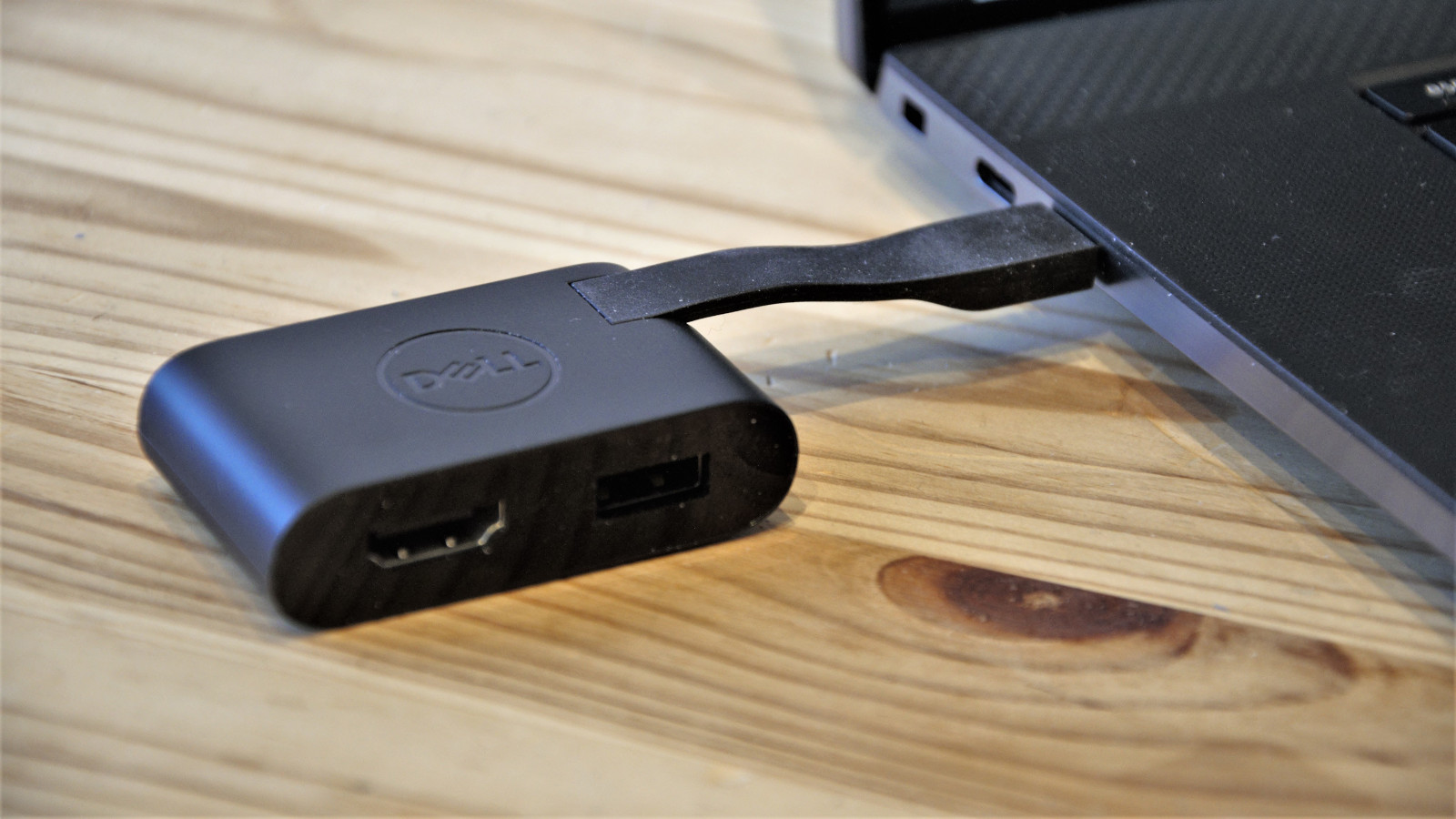
In use
It’s worth pointing out that not all Dell Precision 5750’s are made equal, and the review hardware was on the top rung of its performance ladder.
Therefore a user using a Core-i5 based system and 1080p display machine won’t have the ultra-powerful experience that we did with a spec that included a Core-i9 CPU, 64GB of RAM and a 4K panel.
Out of those parts, the most impressive component is undoubtedly the display, as it has excellent colour representation and brightness. This panel is rated to output 500nits of backlighting, delivers 100% of AdobeRGB gamut and is certified for HDR400. It’s the best thing about this machine, though the processor comes a close second.
All the available CPUs for the 5750 are 10th generation Intel. The review hardware utilised the Intel Core i9-10885H, an eight-core CPU with sixteen thread processing and the ability to turbo boost to 5.3GHz. As mobile CPUs go, on paper at least, it’s a bit of a monster.
For those that want it, Dell also offers the Xeon W-10885M as an option. It has almost identical specs to the Core i9-10885H, but the choice is yours.
The CPU carries the processing requirement so far, but if the need is for compute power, this machine can include an Nvidia Quadro GPU, with options for either the T2000 or RTX 3000 mobile GPUs.
Our review machine had the RTX 3000 with Max-Q Design, a variation of the mobile RTX 3000 configured to be more power-efficient.
We’re undecided on the value of Quadro video technology and assumptions that owners might make about the performance they’ll get from them.
To be clear, the Quadro RTX 3000 in this machine didn’t deliver anywhere near the performance of the mobile RTX 3070 we’ve recently tested, and that GPU is a shadow of the power of a discrete RTX 3070 in a desktop system can output.
While they might make Intel’s integrated UHD Graphics 630 look as glacial as they genuinely are, there are faster options for those that want more graphics and compute power.
Due to these limitations, this isn’t a platform that many gamers might want to borrow, even if the display and processor are appropriate.
As with all performance laptops, the Precision 5750 is a compromise between what is possible and practical. And, in this example, it might be dramatically better than a stock Dell Inspire or other branded performance machine but won’t have many desktop workstations concerned for their long term appeal.
Mark is an expert on 3D printers, drones and phones. He also covers storage, including SSDs, NAS drives and portable hard drives. He started writing in 1986 and has contributed to MicroMart, PC Format, 3D World, among others.
